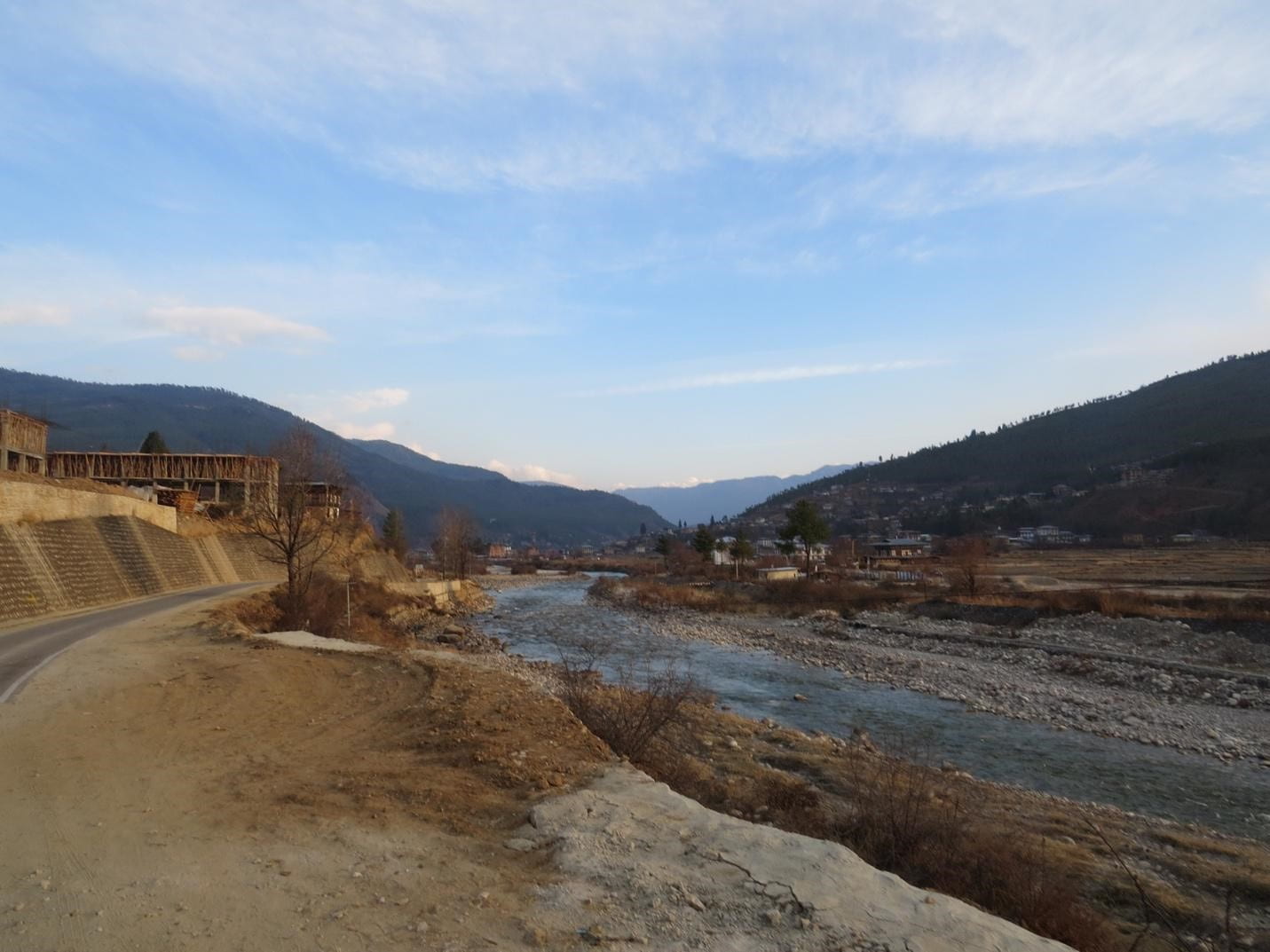Intro: Economic and Ecological Sustainability in Bhutan
Landing in Bhutan, a country with one airport and the Buddhist spirit of interconnectedness weaved throughout, I felt the cool air try to penetrate my nose, my ears, my mouth. I took one deep breath in and closed my eyes for a second. It was coming, the inexplicable twitching of my eyes every time I step into a place I’ve never seen before. The Himalayas loomed over me, us, and in the midst of Oohs and Aahs escaping my lips, my mind was still. Save the tightness in my head from the altitude. A feeling of dissociation took over, and it was easy to hide in that floaty state, hyper-aware of all the details (he just brought three flat screen televisions with him//the waste bin is so far and small//each color on the wall is five shades darker than I’m used to). And the baggage claim staring contest continued. In the end, I couldn’t justify my tired, steady gaze at that one man’s television collection. I turned my gaze towards the window. The wonders of the small Himalayan country were at my fingertips.
Through the Office of Environmental Sustainability and the Global Education Office, I have been selected to propose and accordingly write an essay on a topic of my choice. Before coming to Bhutan, I wrote a proposal hypothesizing that emerging economies such as tourism and hydropower would be affected by climate change. This may be true, but closing in on one or two aspects of Bhutan’s economy seems like a wild misrepresentation of the country.
Bhutan is a country of fewer than 1 million people. Instead of gross national product (GDP), the fourth King, King Jigme Singye Wangchuck, announced gross national happiness (GNH) as the measure of success for Bhutan in 2008. Still, money is a factor. According to an article in one of the national papers, 40% of the budget of the national government is supplied by external loans and grants, mostly from India. From casual conversations with our Bhutanese teachers and staff, my impression is that the government has ambitions to become more autonomous. Both hydropower and tourism may be the key to an autonomous government revenue stream. Tourism, especially under the policy of “high value, low volume,” that the fourth king established, has brought a steady stream of revenue from eco-conscious, wealthy tourists. Balanced with the revenue and ambition for government autonomy is the desire to preserve the natural environment and culture that led to the tourism revenue stream in the first place.
This dynamic nature of Bhutan’s economy is related to an underlying faith in interconnectedness, to India, to Japan, and to all the countries from which wealthy tourists come to support the image of Bhutan as the champion of GNH and a pristine environment. From hydropower to imported meat, from its currency to tourism, Bhutan’s fabric is interwoven with those of other countries. Like these hugging trees—
My goal for now is to record these experiences as they happen and share them with you. Through informal interviews and policy review, I will be able to get a better sense of what Bhutanese people perceive interconnectedness. Hopefully I can come to some sort of conclusion about how this belief in interconnectedness is manifested in efforts to merge economic and ecological sustainability.
Useful Sites:
Gross National Happiness Commission of Bhutan
Tourism Council of Bhutan’s Tourism Policy

